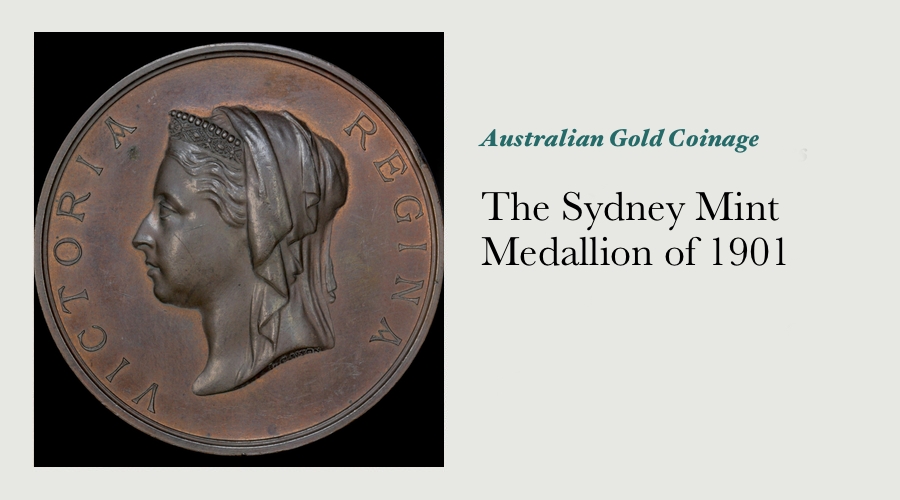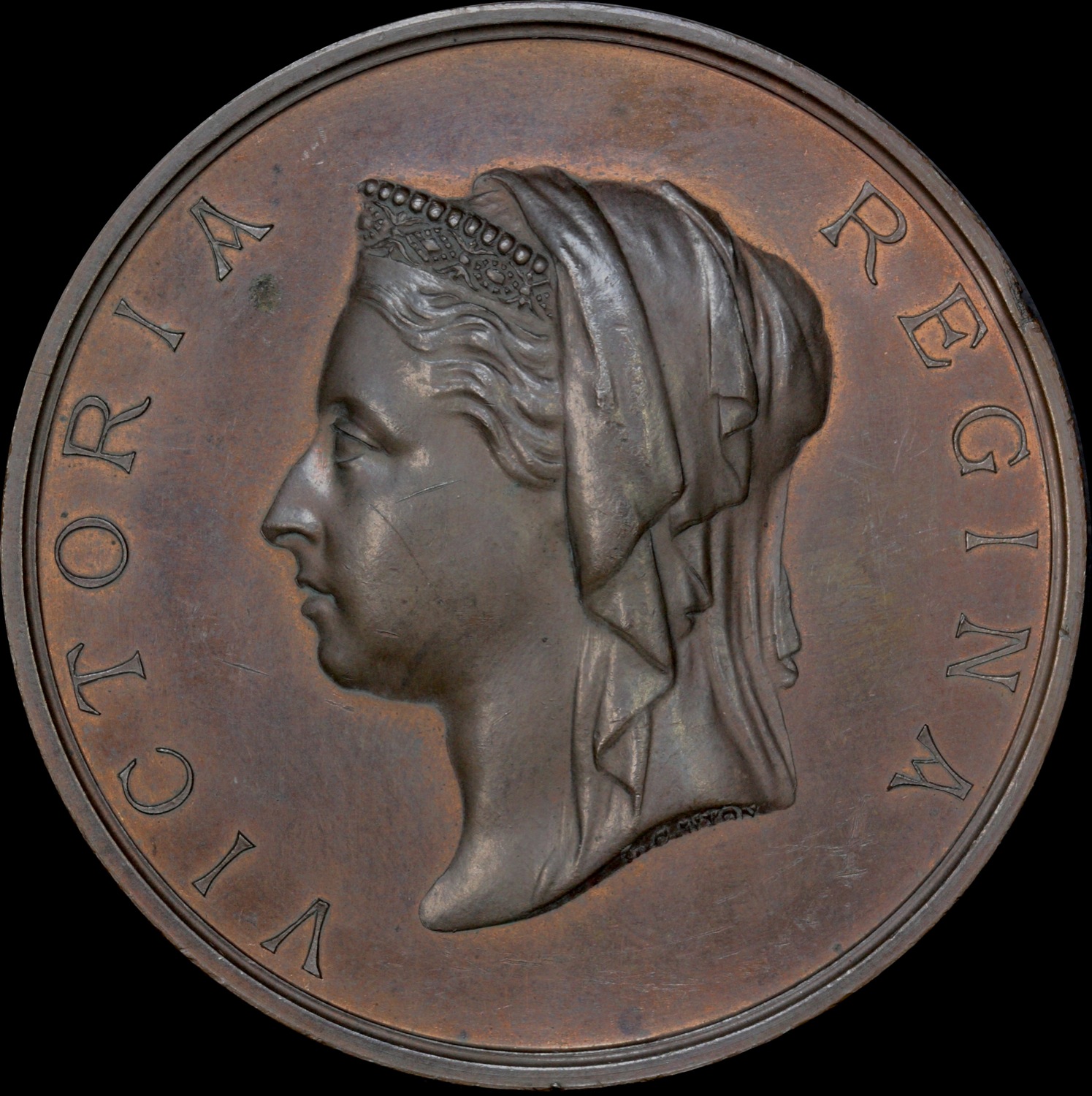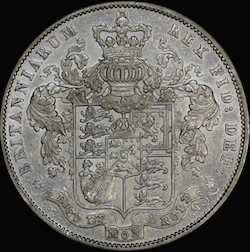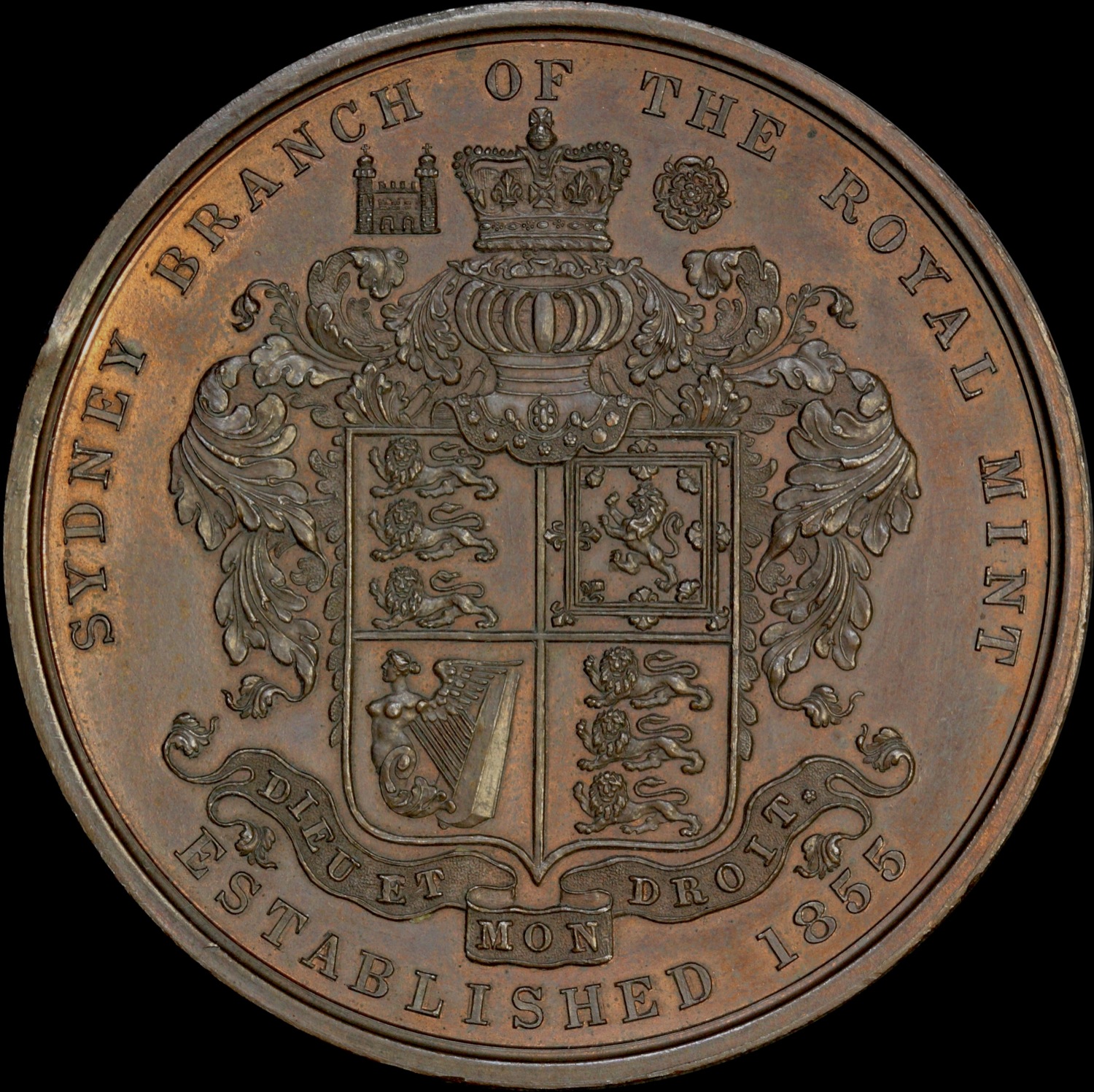The Sydney Mint Medallion of 1901

This enigmatic medallion is the first in a unique set of three - they are the only medallions struck by an Australian Mint prior to 1931 that commemorates the Mint, as opposed to an event or occasion.
Although the Sydney, Melbourne and Perth Mints each struck a small number of medallions commemorating a range of important events, only these three Sydney Mint medallions relate to the Mints themselves.
According to research published by John Sharples, Numismatic Curator at the Museum of Victoria , this medal was “…issued in 1901 to publicize the Sydney Branch of the Royal Mint.”
We can imagine that the selection process for the designs to be used on a medallion intended to advertise the design expertise and production quality of the Sydney Mint would have been very carefully thought through. Consideration of the design elements either side bear this conclusion out.

OBVERSE DESIGN: The obverse design of Queen Victoria shows her wearing a diadem (a small ornamental headband, coronet or crown) and a veil. The legend “VICTORIA REGINA” runs around the perimeter.
This particular portrait of Victoria was designed by Leonard Charles Wyon - the designer of the famous portrait seen on the Type II sovereigns of the Sydney Mint. The only other Australian numismatic item to feature this particular portrait of Queen Victoria was the Egypt Medal - awarded to Australian soldiers that served in the Sudan War between 1882 and 1889.
REVERSE DESIGN: The basis for the reverse design on this medallion was first seen on the British 1825 proof crown of King George IV. In what is regarded as a standard work on the subject of British silver coins (The Silver Coins of England), the British numismatist Edward Hawkins offered the following comment about this design: “This reverse is beautifully executed by Merlen… These pieces are exceedingly beautiful, but, though dies were prepared also in 1828 and 1829, none were actually issued for currency[1].”
Several minor additions were made to Merlen’s original design for the reverse of this medallion - a small depiction of the Tower Mint at London can be seen to the left of the crown at the top, while a rose can be seen to the right of the crown.

The inclusion of an image of the Tower Mint was a clear signal that the medallion was an official product of a branch of the Royal Mint, articulating all of the expectations of quality and expertise as that history might bring.
The French motto “Dieu et mon droit” is seen on a scroll below the shield. Kearsley’s Complete Peerage, published in 1799, translates this to mean “God and my right hand”. This motto refers to the divine right of the monarch to govern, and is said to have first been used by King Richard the Lionheart as a battle cry, as well as an official motto of battle. It was then adopted as the royal motto of England by King Henry V in the 15th century.
The exact date of Merlen’s death is not known, however it is believed that he passed away in either Paris or Brussels in or around 1850. Leonard Charles Wyon is known to have died at his home in London in 1891 - as this medallion is believed to have been struck in 1901, it is therefore clear that the dies were prepared well after the death of both of the designers involved.

The two subsequent medallions issued in this series feature the same reverse design, however feature the portraits of King Edward VII and King George V respectively. Further research will undoubtedly inform us as to the reasons for which these rare, impressive and attractive medallions were struck.
Just what we should make of the fact that only one type of medallion was struck during the reign of each monarch remains to be seen. One such medallion, struck in silver and featuring the portrait of King George V, was offered for sale by Noble Numismatics as part of the John Chapman collection in July 2008. This medallion was described as “inscribed around edge ‘A.M. Le Souef’.”
Albert Malet Le Souef was the last Deputy Master stationed at the Sydney Mint - his association with this medallion indicates that while the Sydney Mint medallion with the portrait of Victoria may well have been struck to act as an advertising medium, if that is the case they were clearly an exclusive advertising medium, one also presented to important dignitaries involved with the history of the Sydney Mint.
Further research is sure to shed more light on the rarity and purpose of these enigmatic medallions.
[1] Forrer; Leonard, “Biographical Dictionary of Medallists”, Spink and Son, London, 1909, p Vol IV, p40.
